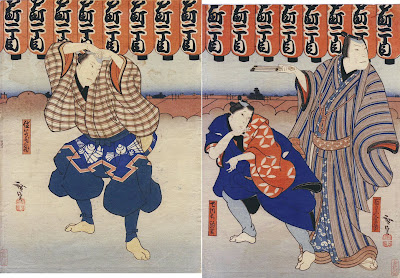
Utagawa Kuniyoshi
(1797 – 1861)
Seichû gishin meimei kagami
Mirror of the True Loyalty of the Faithful Retainers
1857
Teraoka Heiemon Nobuyuki, one of the 47 ronin, carrying two buckets of water through the snow.
Signature: Ichiyusai Kuniyoshi
Publisher: Ise-ya Isaburô
Date: snake 3/1857
Censor seal: aratame
Excellent colours and details. Horizontal center fold, now flattened. Very small repaired loss at left edge. Slight soiling and wrinkling. Minor marks.
oban tate-e
see in B.W. Robinson "Warrior Prints" S90.18


















































